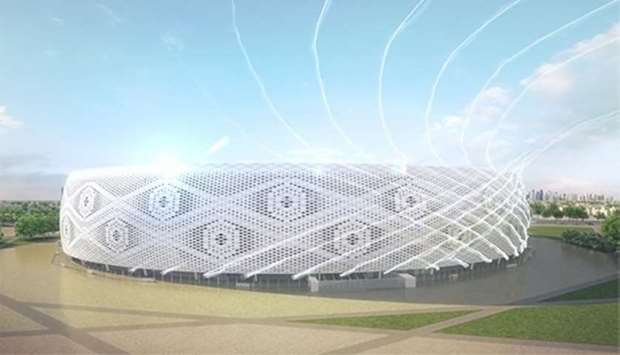He noted that the Arabs general and Qataris in particular are attached to this item of clothing, regardless of its change in name or design which is affected by geography. Al-Thawadi stressed that the gahfiya was one of the early symbol's of a Qatari man's identity.
"With just over five years to go until Qatar opens the doors of the Middle East to the world, this symbolic design embodies everything that unites us as Arabs and Muslims, and is a fitting tribute to the first FIFA World Cup in the Middle East," said al-Thawadi.

Ibrahim M. Jaidah, the designer of the Al Thumama Stadium
"Given its cultural and historical relevance, I am confident that, once completed, Al Thumama Stadium will become a favourite among the region's sports fans and a sporting landmark that demonstrates to future generations just how unique the Qatar World Cup will be," he added.
He stressed the Qatar's commitment to its vision that the World Cup 2022 was a tournament for the region and for the Arab World. The country is keen on providing the opportunity for all GCC citizens and Arabs to participate in hosting. He added that the door remains open from today until they host the fans of the World Cup 2022 to celebrate the first one ever in the region.
The Secretary-General said that choosing Qatari architect Ibrahim M. Jaidah reflects the commitment of the committee to rely on the Qatari identity and culture in developing the local economy. The gahfiya holds in place the ghutra and aghal, which together form a symbol of dignity and independence.
"We've always been very careful to combine the past with the future, even when it comes to our designs. This is already showcased at Al Bayt Stadium in Al Khor. The gahfiya is a continuation of that," al-Thawadi said.
On cooperation with Qatari architect Jaidah, he said that the committee always believed that the World Cup will be an incentive to push forward local industry and economy. He added that the committee was always committed to developing local talents.
"Ibrahim Jaidah is very well known in the State of Qatar. The Ministry of Interior Qatar building is one example of that. That's why we believed he had the talent, the passion and the commitment for this project," the secretary-general said, adding, "It was essential for us to promote and shine the spotlight on such talent and considering his track record and experience, he was well placed for us to be able to work with him, and utilise his talent in one of our stadiums."
Despite being the sixth stadium that has had its design revealed by the committee, it was the first in terms of having the reveal done digitally. The secretary-general explained the committee's rationale by saying that it allowed them to reach a wider audience.
"We've always said this is a World Cup for the Arab world, that's why it was very important for us that the Arab world celebrates and joins us in this launch."

The design of the Thumama stadium was inspired by the 'gahfiya,' an essential component of traditional Arab dress
Secretary-General of the Supreme Committee for Legacy and Delivery Hassan al-Thawadi said that the design of the Thumama stadium was inspired by the 'gahfiya,' and reflects the harmony between the Qatari heritage they take pride in and Qatar's aspiration towards the future.
